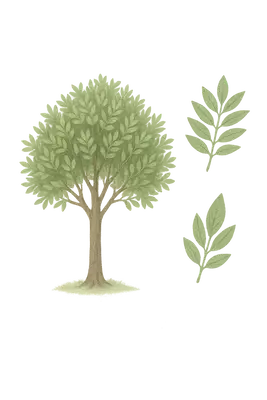Ash (Tree)
Description
Ash trees (genus Fraxinus) belong to the olive family (Oleaceae) and are widespread deciduous trees recognizable by their gray bark and compound, feather-like leaves. Common species include European ash (Fraxinus excelsior) and North American species like white and green ash. Ash produces small wind-pollinated flowers in spring, typically before full leaf emergence.

Allergy Symptoms
Ash pollen commonly triggers spring allergies, with symptoms including:
- Sneezing
- Nasal congestion
- Runny or itchy nose
- Itchy, watery, red eyes
- Throat irritation and coughing
- Potential worsening of asthma symptoms
Cross-reactivity occurs between ash and related species, such as olive and privet.
Typical Pollination Period
Ash trees typically release pollen from March to May, peaking around April. Pollination starts earlier (January-February) in warmer climates (e.g., Mediterranean, Southern U.S.) and later in cooler climates (e.g., Northern Europe, Canada).
Geographic Distribution
Ash trees are common across temperate zones of the Northern Hemisphere:
- Europe: widespread from Scandinavia to the Mediterranean.
- North America: eastern, central, and parts of the western regions.
- Asia: temperate regions, including China and Japan.
- Some introduced populations in the Southern Hemisphere (Australia, South America).
Tips for Reducing Exposure and Managing Allergies
- Monitor pollen forecasts and stay indoors during peak pollen times.
- Keep windows closed and use air filtration indoors.
- Wash or shower after outdoor exposure; regularly clean pets.
- Use preventive allergy medications like antihistamines and nasal sprays.
- Consider allergy testing and immunotherapy for persistent symptoms.